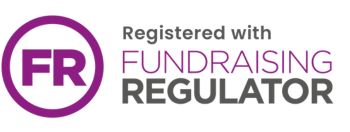New research has provided encouraging evidence that people with severely impaired memory after brain injury can learn complex motor skills with real-world applications. In a study reported in the latest issue of Neuropsychological Rehabilitation researchers used errorless learning techniques to teach two people with memory deficits touch typing.
Memory difficulties are among the most common problems after brain injury. The two aspects of memory which are usually affected are semantic memory (general knowledge of the world) and episodic memory (memory for past events in an individual's life). These forms of memory rely on areas of the brain situated in the cortex, which is at the surface of the brain and is easily damaged. However, a third type of memory, called procedural memory, relies on deeper lying areas of the brain which are injured more rarely. This means that procedural memory, which is responsible for learning complex skills such as riding a bike or playing a musical instrument, often remains intact after brain injury.
It was once thought that it was necessary to process new skills consciously in episodic and semantic memory before passing them on to the more unconscious and automatic procedural memory. This is done through trial and error as an individual learns by making mistakes and correcting them. This is very difficult for someone with memory impairment because they cannot remember their mistakes and so are condemned to repeat them. However, more recent research has shown that it is possible for motor skills to be acquired without input from conscious memory and that gradual teaching techniques involving errorless learning, which minimises the mistakes made, can lead to an improvement in skills. However, previous research has focused on basic laboratory based tasks with little or no application in the real world.
The recent study, by Mary Todd and Corinne Barrow at the University of Bolton, aimed to test the effectiveness of errorless learning techniques in teaching two people with memory impairments touch typing, a motor skill which is useful in everyday life. There were four participants in the study, two with memory difficulties due to brain injury and two with no brain injury or memory problems. The brain injured participants were a woman referred to as CJ, with severe memory impairment due to left temporal lobe surgery for epilepsy, and a man known as LH who had a sub-arachnoid haemorrhage resulting in difficulties remembering recent events and even the names of his family members. Neither had any experience of touch typing and both participants and their family members expressed severe doubts about their ability to learn the skill. The two non-brain injured participants also had no previous experience of touch typing and were used as controls to compare performance.
Over the course of 30 weeks training was carried out using twice weekly sessions using an adapted software training package and one-to-one teaching. Learning was designed to eliminate mistakes and attempts at conscious remembering and took place in three stages. Stage one involved gradually learning the positions of the keys, without looking at the keyboard, by learning basic set phrases. Stage two consolidated and expanded on stage one by increasing the vocabulary of phrases and stage three increased speed and accuracy. Pre-set criteria had to be reached before progressing from one stage to the next.
By the end of the training all participants had achieved the criteria for each stage. The performance of the brain injured and non-brain injured participants was almost identical with an average of around 20 words-per-minute at 90% accuracy. The brain injured participants even managed up to 30 wpm with CJ achieving an impressive 32 wpm at 98% accuracy. This achievement is made all the more remarkable for the fact that, after six months, CJ still couldn't reliably recall the name of the researcher or many of the practice phrases she had typed hundreds of times.
The long term durability of the learning was demonstrated by testing the participants 12 months after completing the study. At that time both brain injured participants had retained their skill and successfully transferred it to use unadapted word processing software. Both used touch typing in their everyday lives to type documents and send e-mails.
These results demonstrate the amazing capacity of the brain to learn despite impairment. They also raise the intriguing possibility that the techniques could be used to teach other complex skills such as playing a musical instrument.
Reference
Todd, Mary and Barrow, Corinne (2008) 'Teaching memory-impaired people to touch type: The acquisition of a useful complex perceptual-motor skill', Neuropsychological rehabilitation, 18:4, 486 - 506.
Back









